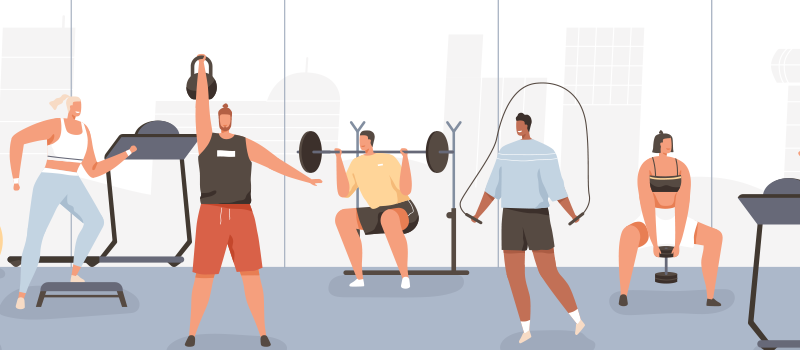
Why Do Exercise Needs Vary Between Individuals? Understanding the Factors Behind Personalized Fitness
Exercise plays a crucial role in maintaining physical health, mental well-being, and overall vitality. But have you ever wondered why exercise routines that work wonders for one person might not yield the same results for someone else? This is because exercise needs vary greatly between individuals. From genetics to lifestyle, numerous factors influence the type and intensity of workouts each person requires.
Understanding these differences can help you tailor a fitness routine that suits your unique needs and helps you achieve optimal health.
What Influences Individual Exercise Needs?
1. Age and Life Stage
As we age, our physical capabilities and exercise needs evolve. For instance, children and teenagers benefit from high-energy, dynamic activities that support growth and development. Adults may focus on strength training and cardiovascular health, while older adults might prioritize balance and flexibility exercises to maintain mobility and reduce the risk of falls.
2. Genetics and Body Composition
Our genetic makeup significantly impacts our exercise response. Some people are naturally predisposed to excel in endurance activities, while others may find strength-based exercises more effective. Additionally, body composition, including muscle mass, fat percentage, and bone density, affects the type and intensity of workouts that are most beneficial.
3. Fitness Level
Beginners require gentler routines that gradually build endurance, strength, and flexibility. On the other hand, seasoned athletes or fitness enthusiasts can handle high-intensity exercises to push their limits further. Starting at the appropriate fitness level prevents injuries and ensures steady progress.
4. Health Conditions and Medical History
Chronic illnesses like diabetes, hypertension, or arthritis influence exercise choices. For instance, individuals with joint pain may prefer low-impact workouts like swimming or yoga, while those with cardiovascular issues might focus on moderate aerobic activities.
5. Personal Goals
Fitness goals play a significant role in determining exercise needs. Someone aiming to lose weight may focus on calorie-burning workouts, while those seeking muscle gain will prioritize resistance training. Flexibility and mental well-being goals might involve yoga or Pilates.
6. Lifestyle and Daily Activity Levels
Sedentary individuals might need to integrate more movement into their routines, while physically active people may only need supplemental exercises. Occupational demands also matter; someone with a desk job will require different exercises than someone in a physically demanding profession.
7. Gender Differences
Biological differences between men and women can influence exercise needs. Hormonal fluctuations, such as those during pregnancy or menopause, may alter physical capabilities and recovery times, requiring tailored fitness plans.
Benefits of Personalizing Your Exercise Routine
Tailoring your exercise routine to meet your specific needs has several advantages:
- Enhanced Effectiveness: Personalized workouts maximize results by focusing on your unique strengths and areas for improvement.
- Reduced Risk of Injury: Engaging in exercises suited to your fitness level and health condition minimizes the likelihood of injuries.
- Increased Motivation: A routine aligned with your preferences and goals makes it easier to stay committed.
- Improved Mental Well-Being: Activities that resonate with you help reduce stress, boost mood, and improve overall quality of life.
Tips for Creating a Personalized Exercise Plan
- Consult a Professional: Speak with a fitness trainer or healthcare provider to assess your current fitness level and identify your specific needs.
- Set Realistic Goals: Start with achievable goals and gradually increase intensity as your fitness improves.
- Listen to Your Body: Pay attention to how your body responds to different exercises and adjust accordingly.
- Incorporate Variety: Include a mix of strength, cardio, and flexibility exercises to keep your routine balanced and engaging.
- Stay Consistent: Regular exercise is key to reaping long-term benefits, regardless of your starting point.
Embrace Your Unique Fitness Journey
Exercise needs vary between individuals due to a multitude of factors, including age, genetics, health conditions, and lifestyle. Recognizing these differences is the first step toward crafting a fitness routine that supports your goals and enhances your overall well-being. By tailoring your workouts to your unique circumstances, you can enjoy a healthier, more fulfilling life.
So, whether you're just starting your fitness journey or looking to fine-tune your routine, remember that one size doesn’t fit all when it comes to exercise. Focus on what works best for you and stay consistent for lasting results.

Leave a comment